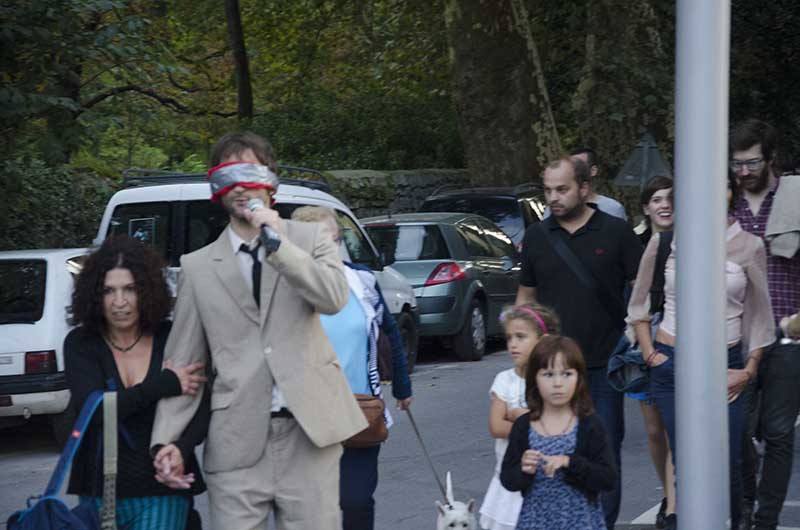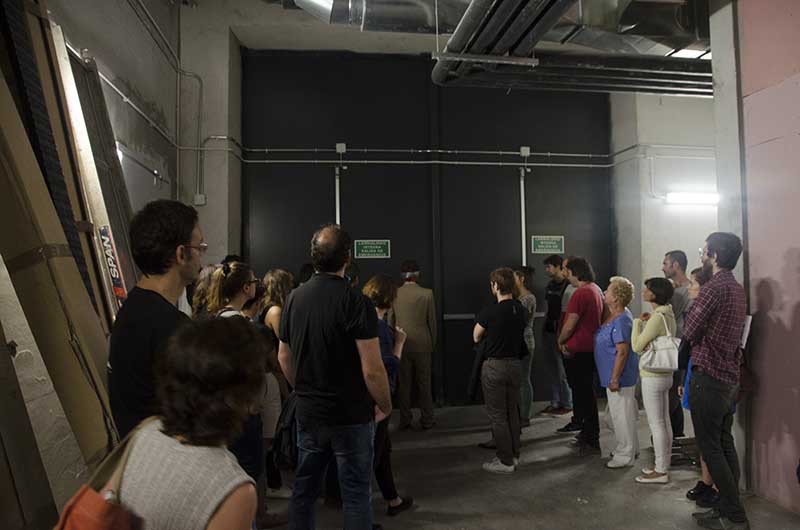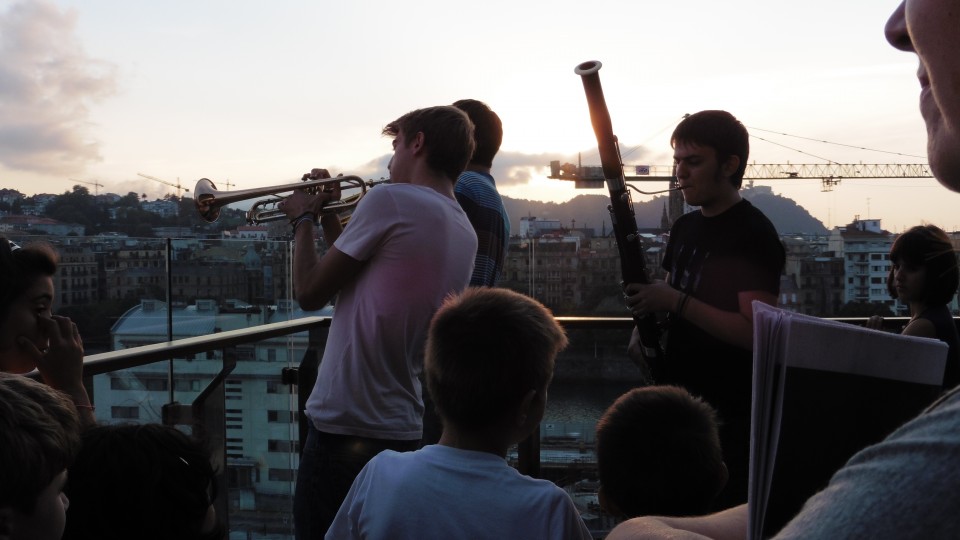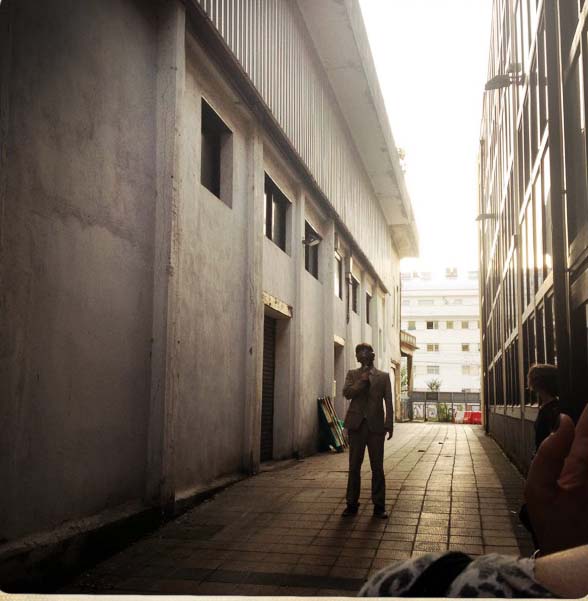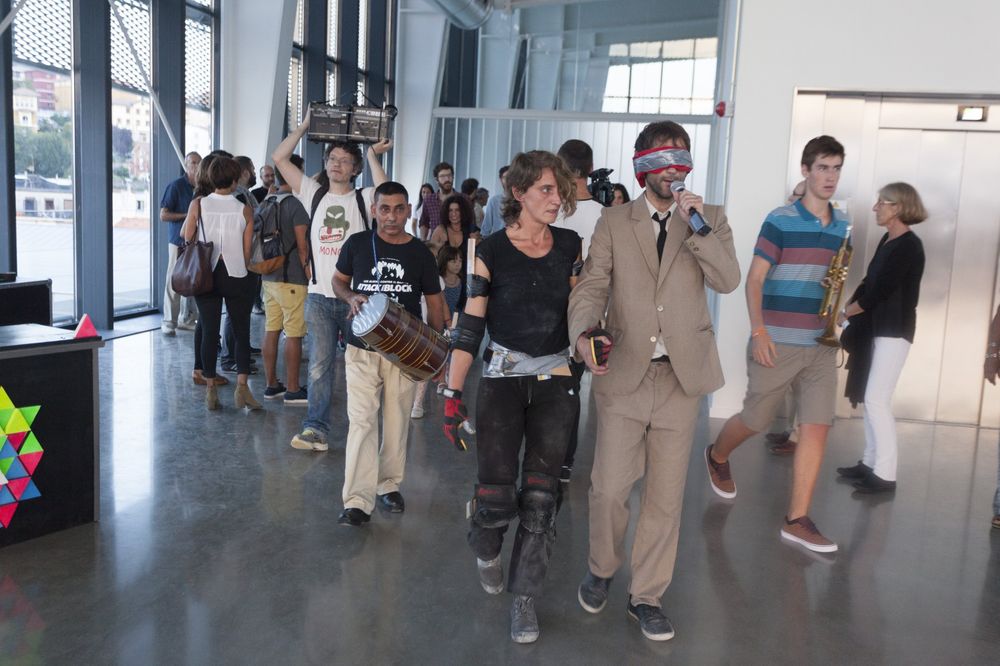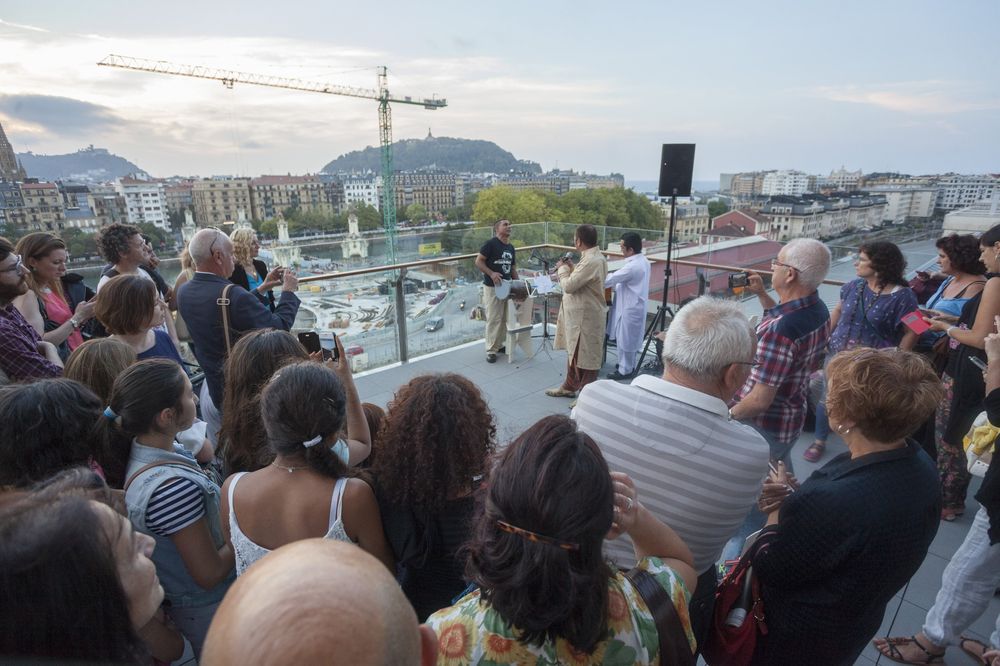Augurium, Recorrido PuroAugurium, Recorrido puro Looking outside to see the future. Interpreting the cues, listening, sounding out by paying attention to the small changes that will let us decipher the future. Moving in space and time, shifting the focus to listen to the Egia district, the Blas de Otero square, the newsagent’s opposite, the train station, the river estuary, and, further away, the Bay of Biscay. At the inauguration of the International Centre for Contemporary Culture Tabakalera, Augurium, Recorrido puro, is outlined as a tour-ritual to see beyond. Truly -says Socrates to Alcibiades- the eyes of thought just begin to have the piercing look when the vision of the eye begins to lose its sharpness. Trough the service stairs we enter the top floor following a woman with small wooden boards attached to his body, which she sounds brushing the walls. After a short wait at the door of an elevator, it opens and someone blind gets out. The woman takes him and they go to the emergency door. From this moment on, she will be his guide. With them we left Tabakalera building and follow them to a nearby old industrial buildings. Next to the old wine store Azpilicueta, the blind man stops and starts talking. He will continue talking until the end of the tour. Tiresias is punished with blindness because of seeing Athena bathing. But the goddess yields to the exhortations of the young man’s mother and gives him the gift of prophecy. Oedipus punished himshelf for his crimes by tearing his eyes, but in the text of Sophocles, Oedipus at Colonus, about the end of his life he has become a wise man. While the blind-bard unveils his omen, a chain crane descends from the upper terrace of the building, then to raise the speakers by which his voice is ringing. Later we climb the old stairs inside the building to the roof, and we access to the balcony passing by the hanging voice of the poet, who remains on the street. On the terrace we see and hear the city (the river, the railway, the forest of Cristina Enea, the Cantabrian …) and suddenly we can hear trumpets sounding free-jazz style in the distance. Soon we realize that music comes from the roof of the building of Tabakalera. Three musicians run their wind instruments towards us. Then the sound of a guitar noise rock from the roof of a building across the tracks is added. Meanwhile, on the terrace where we are, among fig and skylights, it has been placing a group of strings and winds that binds to the concert interpreting fragments of Handel’s Sarabande. Finally, from the opposite end of the terrace near the park we hear the exaggerated screaming from blackbirds and sparrows. For a period of time we hear all the sounds together: city, free-jazz, noise rock, Handel, recorded birds. Blindness is not mutilation, but opening of looking at the still unknown time for men, it provides the ability to see beyond what is visible. The guide invites us to go in turns to accompany the blind as she is sounding the way back, brushing her prosthesis with the road and the walls of the buildings, while the poet continues his diffuse prophecy. We return to Tabakalera through the front door, crowded. The group tries to break through the stairs, tries not to lose the small references that make it as a group in the crowd: a blindfolded man, a woman with tablets attached that makes sounds rubbing against anything in her way, the speakers that amplify the voice of the blind, and other people who you can identify as fellows in the ritual. We finally got to the top of the building, to the terrace we had spotted from the industrial building, and we end up ther, joining the devotional qawwali music that perform three Pakistani musicians. End of the ritual. There are also those that pierce the night, who see beyond appearances, even beyond the visible. (Italics from The taste of the world. An Anthropology of the sense, David Le Breton). Orquestina de Pigmeos: Nilo Gallego and Chus Dominguez, along with
|

 Español
Español